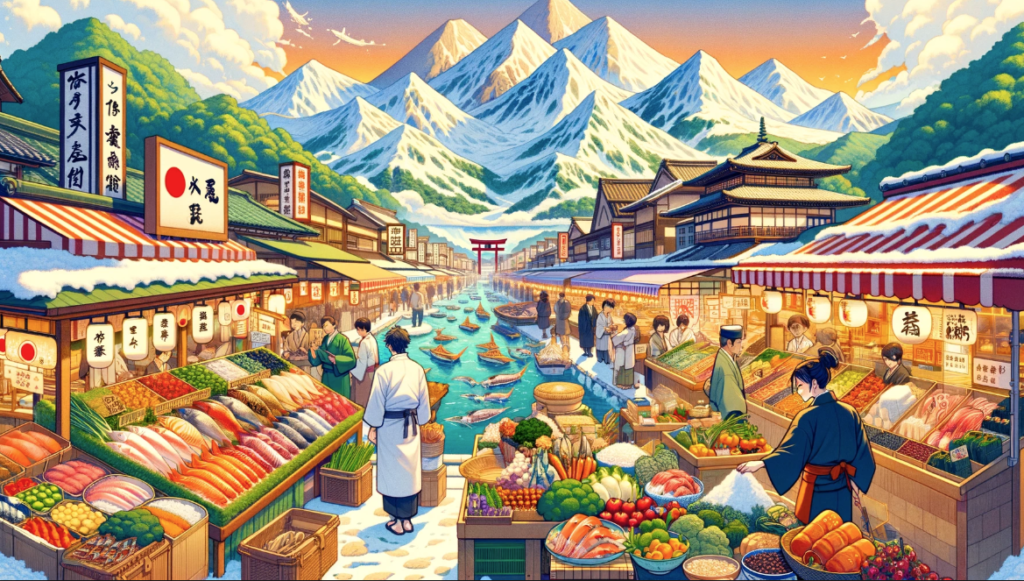
Lesson 11. Influence of Geography on Japanese Cuisine
Topic Question: How does the geography of Japan influence its cuisine?
No. 1
First, try answering the question yourself.
The instructor will provide advice on vocabulary, grammar, and expression corrections.
Sample Answer – Let’s read aloud – The instructor will check your pronunciation and accent.
Japan’s geography, being an island nation with a diverse landscape, plays a significant role in shaping its cuisine. The abundance of coastline provides a vast variety of seafood, making it a staple in the Japanese diet, evident in dishes like sushi and sashimi. The mountainous regions contribute to the cultivation of specific crops such as wasabi and tea, while the distinct seasons influence the seasonal availability of ingredients, leading to a culture of eating what is fresh and in season. Additionally, Japan’s numerous rivers and clean water sources are ideal for rice cultivation, the cornerstone of Japanese cuisine. The geographical diversity of Japan encourages a rich variety of regional dishes, each with unique flavors and ingredients.
No. 2
5 Words to Learn and Their Meanings – Pronounce the Words Correctly (Pronunciation Training) + Make Sentences Using the Words Instantly
1. Staple (主食): A basic or principal item, especially of food.
Rice is a staple in many Asian cuisines.
2. Cultivation (栽培): The process of trying to acquire or develop a quality or skill.
The cultivation of organic vegetables requires careful attention to soil and environment.
3. Seasonal availability (季節に応じた利用可能性): The period when a specific type of food is readily available and at its best quality.
The restaurant’s menu changes based on the seasonal availability of ingredients.
4. Cornerstone (基石): Something that is essential, indispensable, or basic.
Trust is the cornerstone of any successful relationship.
5. Diversity (多様性): The state of being diverse; variety.
The cultural diversity of the city is reflected in its wide range of restaurants and cuisines.
No. 3
3 Key Phrases and Example Sentences
1. Abundance of coastline (豊富な海岸線)
The abundance of coastline contributes to the region’s rich selection of seafood dishes.
2. Eating what is fresh and in season (旬のものを食べる)
Japanese cuisine emphasizes eating what is fresh and in season for the best flavor and nutritional value.
3. Rich variety of regional dishes (地域料理の豊かな多様性)
Traveling through Japan, one can experience a rich variety of regional dishes, each telling a story of the local culture and geography.
No. 4
Discussion and Exchange of Opinions on the Sample Answer
Instructor: How do you think Japan’s geography has contributed to the global popularity of its cuisine? Are there similar geographical influences on cuisine in your own country?
Student: [Opinions of students]
No. 5
Free Discussion on the topic
Let’s discuss the importance of locally sourced ingredients in culinary practices. How does the concept of “farm to table” or “sea to table” enhance the dining experience? Can you think of any local dishes from your area that are influenced by geography?







